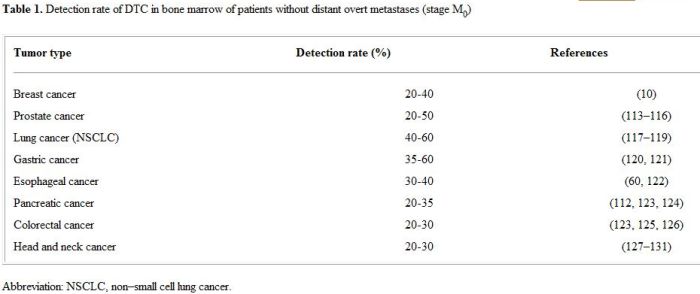According to the traditional dogma neoplasia starts as a localized transformation
of a normal cell into a malignant.When small, the tumor hardly ever seeds
metastasis. In order to so it has to grow to a certain size. Recent studies
indicate that this critical size may be relatively small, and attained even
before the localized tumor itself is detected.
Sensitive immuno-cytochemical and molecular assays allow the detection of
single circulating tumor cells (CTC) in the peripheral blood
and disseminated tumor cells (DTC) in the bone marrow. In
a recently published review (1) the authors state that tumor cells are frequently
detected in the blood and bone marrow of cancer patients without clinical
or even histopathologic signs of metastasis (stage M0). The results
obtained thus far have provided direct evidence that tumor cell dissemination
starts already early during tumor development and progression. Interestingly,
bone marrow has emerged as a common homing organ for metastatic epithelial
tumor cells, independent of the primary tumor site and the pattern of overt
metastasis. Their Table 1 is reproduced here.

Progenitors and end cells
The tumor cell population consists of two kinds of cells. Progenitors, capable
of proliferating and end cells, which do not proliferate
and are relatively short lived . It seems reasonable that small tumors
seed mainly isolated end cells and only later seed progenitors and clonogenic
stem cells which establish micrometastasis.
One wonders what is the purpose of all this. We are reminded of the sebaceous
gland whose terminally differentiated cells accumulate sebum and are secreted
into the hair follicle. From this point of view the small tumor serves as
an holocrine gland.
References
1. Catherine Alix-Panabières, Sabine Riethdorf, Klaus Pantel
Circulating Tumor Cells and Bone Marrow Micrometastasis
Clinical Cancer Research 14, 5013, August 15, 2008.